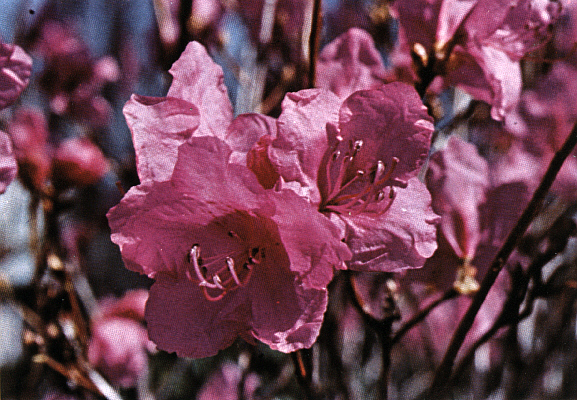QBARS - v31n3 R. mucronulatum 'Pink Panther'
R. mucronulatum var. 'Pink Panther'
G. David Lewis, Colts Neck, NJ

|
|
R. mucronulatum
'Pink Panther'
Photo by G. D. Lewis |
In early April, 1969 I drove to Connecticut to visit the nursery of Ernest Egan with the intent of purchasing some rhododendrons for our garden. After selecting a number of hybrids I became interested in a field of R. mucronulatum seedlings that Mr. Egan had grown from a pink form of the species. The plants were still small and those that were blooming had only a few flowers that could be examined. A few plants showed the common lavender shunned by most collectors, but the majority were pink in shades similar to R. mucronulatum var. 'Cornell Pink'.
Examination of the first row of plants gave evidence that a few seedlings were perhaps darker pink than the others and resulted in my checking every plant in every row for a darker pink. After considerable deliberation I selected a plant whose flowers were not fully open but whose buds seemed darker than all the rest. I purchased the plant and took it home to our garden.
In the succeeding days as the buds opened I was rewarded. We had a dark pink - clearly darker pink and brighter than any other R, mucronulatum that I have ever seen! The plant is now 6 feet tall and 4 wide and has drawn many compliments each spring. We have named this plant 'Pink Panther'. Cuttings have rooted readily and we have distributed a few plants to friends. The flower buds are Red Purple Group 63-A (R. H. S. Colour Chart) while the fully opened flowers are Red Purple Group 66-C. I have selfed this plant and crossed the two best siblings that resulted. 'Pink Panther's' grandchildren are now in our nursery bed. There are no flower buds but the fall foliage was bright red. Perhaps they will be one step closer to a red R. mucronulatum . If not, we will cross the two best and try again.
